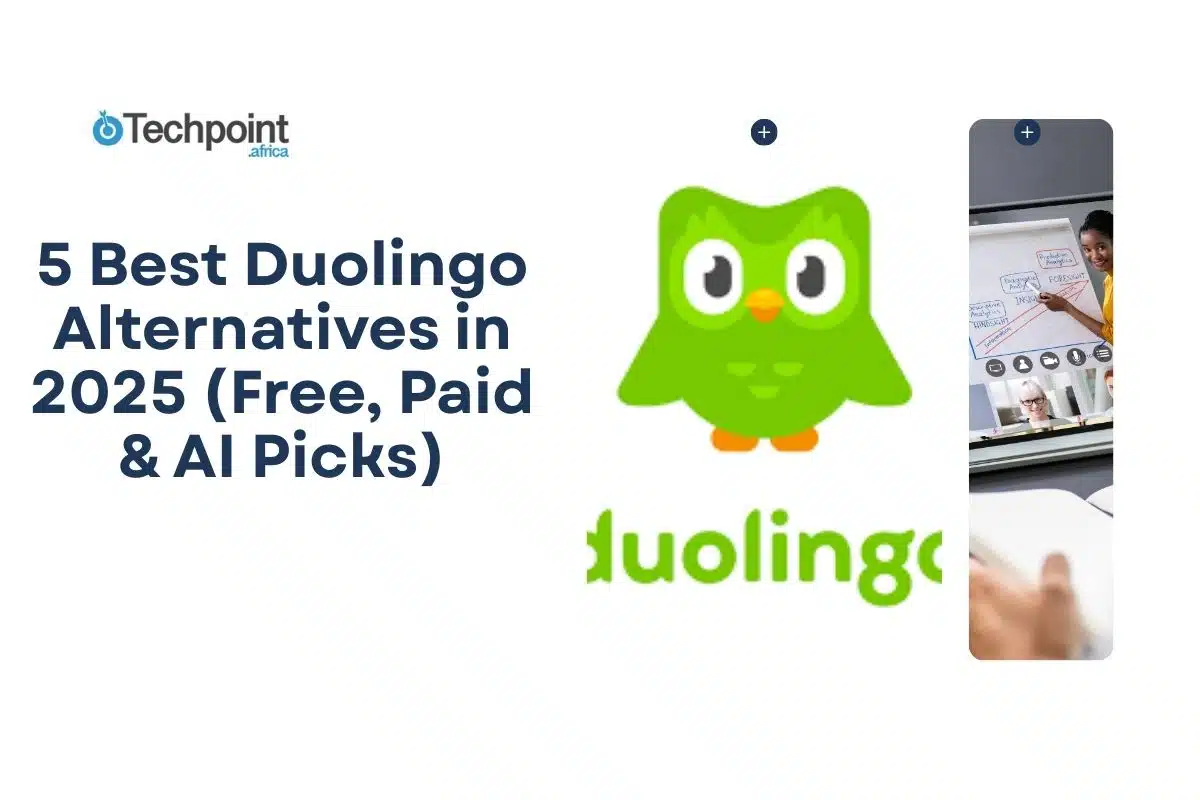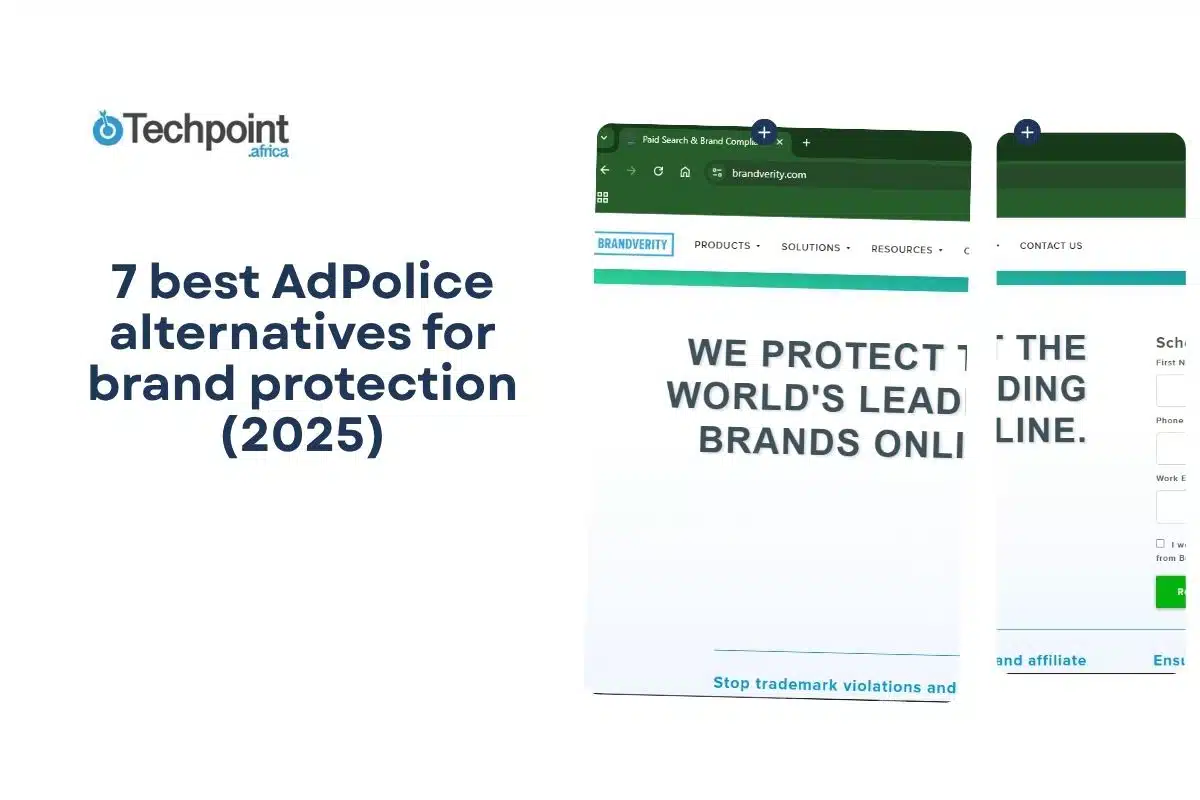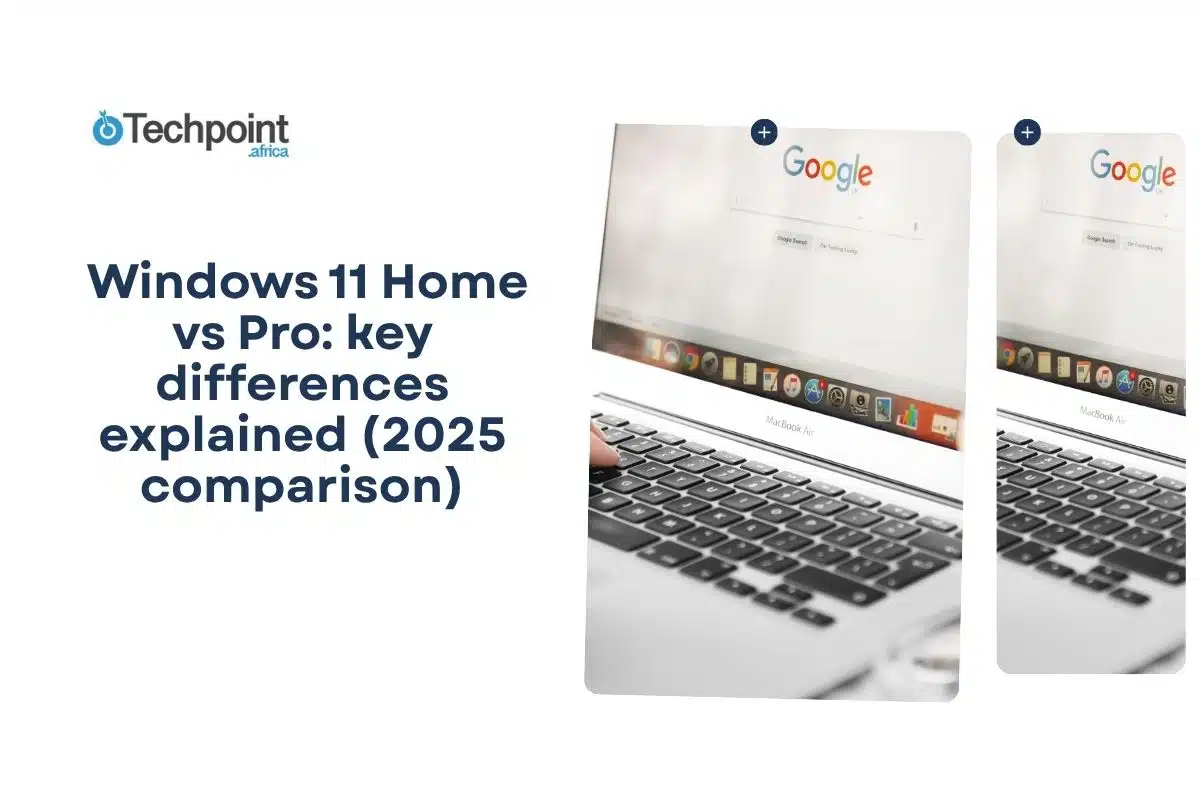Duolingo is fun. It’s bright, friendly, and somehow turns language learning into something you actually want to do. But after a while, you might start to wonder if there’s more out there. Maybe you’re not speaking as much as you’d like. Maybe the lessons feel a little too easy. Or maybe you just want a break from that little green bird staring into your soul.
Whatever the reason, you’re not stuck. There are other apps that do things differently and in some cases, better. Some focus on real conversations. Others use AI to talk with you like a tutor would.
Here are five Duolingo alternatives that are absolutely worth trying in 2025.
What Is Duolingo?

Duolingo is a freemium language-learning app launched in 2011 by Luis von Ahn and Severin Hacker, now boasting around 130 million monthly active users and courses in 43 languages—from Spanish and French to Irish, Navajo, and even Klingon. It turns learning into a game, offering points, streaks, leaderboards, and gentle reminders from its mascot, Duo.
Features at a Glance
- Bite‑size lessons (3–5 min) targeting reading, writing, listening, and some speaking.
- Smart review system powered by AI adjusts lesson difficulty and notifications.
- Gamified perks: streaks, leagues, achievements, avatars, and “hearts” for mistake lives.
- New “Adventures” interactive scenarios simulate real dialogues with AI feedback.
- Supplementary courses: Duolingo ABC (early literacy), English Test, and even math/chess.
Pricing Tiers
Free Plan:
- Fully free, ad-supported, and includes core content with some feature limits (e.g., fewer hearts).
Super Duolingo:
- Removes ads, unlimited hearts, offline access, and enhanced tracking.
- In the US: ~$12.99/month, or ~$59.99–83.99/year depending on region.
Duolingo Max:
- Adds AI-rich features like “Explain My Answer,” Roleplay, and Video Call with an avatar
- Priced at ~$29.99/month or ~$167–168/year, with variations in family plans and regions.
Family Plan:
- Covers up to six users at ~$120/year for Super, or ~$240–300/year for Max.
Duolingo remains a powerful entry‑level tool, especially for casual learners or beginners. But as its free tier gets more limited and pricing climbs for AI features, it may be time to explore fresher options.
5 Duolingo alternatives you should Explore
Duolingo is great for getting started, but it’s not the only app out there. If you’re looking for something different, maybe more structured lessons, better conversation tools, or just a fresh learning style, there are plenty of options.
In this guide, we’ll walk you through five top alternatives:
- 2 paid apps with more advanced features
- 2 free or freemium tools
- and 1 AI-powered app that’s changing the game
Paid Duolingo alternatives
Sometimes, free just doesn’t cut it. If you’ve hit a plateau with Duolingo or want more structure, better speaking tools, or lessons that feel like a proper course, a paid app might be worth it. These apps usually go deeper into grammar, offer smarter reviews, and skip the ads and heart limits. Some even include live classes or AI conversation practice.
Here are two paid Duolingo alternatives that offer a more serious approach to learning a language.
- Babbel
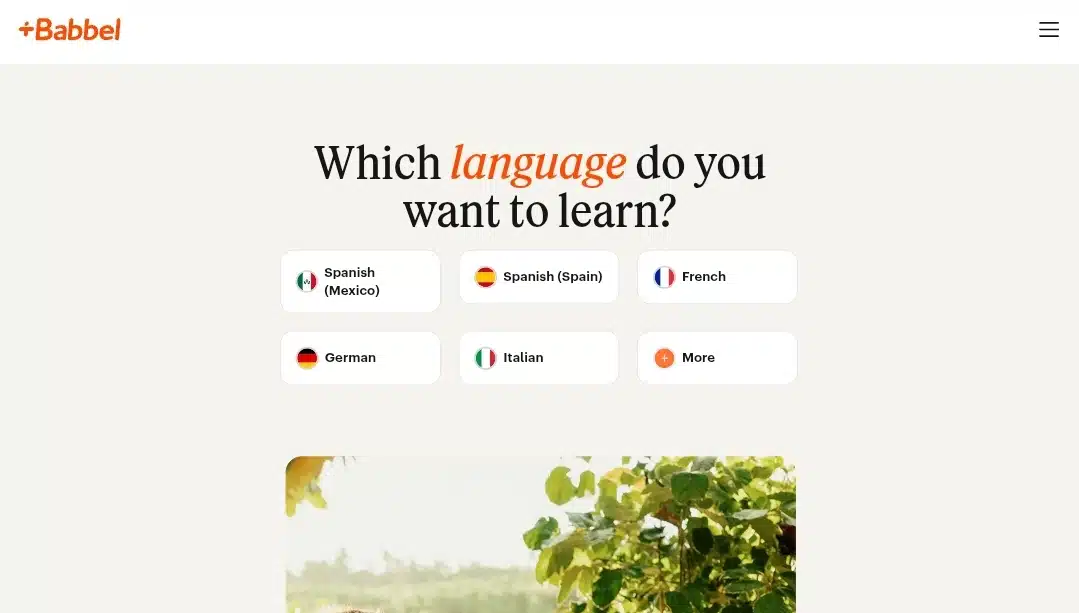
Babbel is a subscription-based language app built around real-world conversation and structured learning. Unlike Duolingo’s fast-paced, gamified style, Babbel takes a more academic approach, but still keeps it practical and interactive. Lessons are developed by a team of over 150 linguists and educators, focusing on the kinds of dialogues you’d actually have in everyday life, like ordering food, chatting with coworkers, making travel plans, and more.
It’s especially popular with adult learners and professionals because it doesn’t shy away from grammar or sentence structure. Instead of just showing you words and asking you to match them, Babbel explains why things work the way they do, then helps you practice using them in real sentences. The platform also adapts to your skill level and learning pace, reinforcing what you’ve learned with personalized review sessions.
Features
- Conversational Lessons: Every course is built around real-life situations and themes, so you’re not just memorizing vocabulary; you’re learning how to use it.
- Grammar Support (That Makes Sense): Short explanations are built into the lessons to help you understand sentence patterns without feeling overwhelmed.
- Speech Recognition: This feature listens to your pronunciation and gives instant feedback, so you can practice speaking with more confidence.
- Spaced Repetition System (SRS): A smart review tool that surfaces words just before you’re likely to forget them, using multiple formats like flashcards, listening, speaking, and typing.
- Babbel Live: Optional upgrade for live virtual classes with certified teachers. Sessions are small, interactive, and organized by skill level.
- AI-Powered Conversation Practice: A Newer feature where you chat with a smart AI assistant that simulates real dialogue, helping you think on your feet.
- Offline Learning: Lessons can be downloaded and completed without internet access, perfect for travel or study breaks on the go.
- Cultural Insights: Many languages include short readings, cultural notes, and podcasts that give context to your learning.
Pricing
Babbel is relatively affordable, especially if you choose longer-term plans. All subscriptions give full access to one language.
- 1 month: $14.95
- 3 months: $29.85 total (~$9.95/mo)
- 6 months: $50.70 total (~$8.45/mo)
- 12 months: $83.40 total (~$6.95/mo)
- Lifetime access: $299 one-time, often discounted to around $129 via third-party deals (like StackSocial)
Babbel Live (for real-time classes) is priced separately and starts at around $99 for 5 classes, with larger bundles available.
- Rosetta Stone

Rosetta Stone is a veteran in language learning, first launched in 1992. It now offers digital courses in 25 languages using its signature “Dynamic Immersion” method. It means teaching entirely in the target language, with no translations used. Lessons start with picture-word associations and progress to full phrases and interactive conversations.
They’ve modernized with AI-driven pronunciation tools and supplemental content, making it a strong choice for learners serious about speaking naturally and sounding authentic. It’s favored by people who want to build language skills from the ground up, starting with intuitive learning, not grammar explanations.
Features
- Dynamic Immersion: Lessons rely solely on images, sound, and target-language input, forcing your brain to interpret context like a child learning vocabulary.
- TruAccent™ Speech Recognition: Evaluates your pronunciation in real-time (hundreds of times per second), giving instant feedback so you can tweak accent and intonation accurately.
- Structured, Level-Based Curriculum: Courses are organized into progressive units (foundations to fluency), each ending with milestone exercises that simulate practical conversations.
- Offline Mode: Downloadable lessons mean you can learn even without an internet connection.
- Supplemental Activities: Includes stories, phrasebooks, and audio companions to add context, expand pronunciation, and improve listening skills.
Pricing
Rosetta Stone doesn’t offer a free tier, but it has a few paid plans:
- Single-language subscription:
- 3 months: $47.97 total ($15.99/mo)
- 12 months: $126 total ($10.50/mo)
- Lifetime access (all 25 languages):
- Typically $179–199 (discounted from $399), ideal for long-term learners
- Live tutoring (optional): Extra cost on top and varies by package.
Compared to Duolingo’s freemium model, Rosetta Stone is pricier upfront, but the lifetime plan can be more cost-effective if you’re committed to fluency, especially across multiple languages. Its immersive, structured lessons and advanced pronunciation tools are hard to beat, though they may feel tougher for casual learners.
Free Duolingo alternatives
Not everyone wants to pay for a language app, and honestly, you don’t have to. There are some great tools out there that are free or at least have generous free tiers. These apps skip the flashy subscriptions but still deliver solid learning experiences. Some even include features you’d expect to pay for, like native speaker videos or smart review systems.
Let’s look at two strong free alternatives to Duolingo that are actually worth your time.
- Memrise
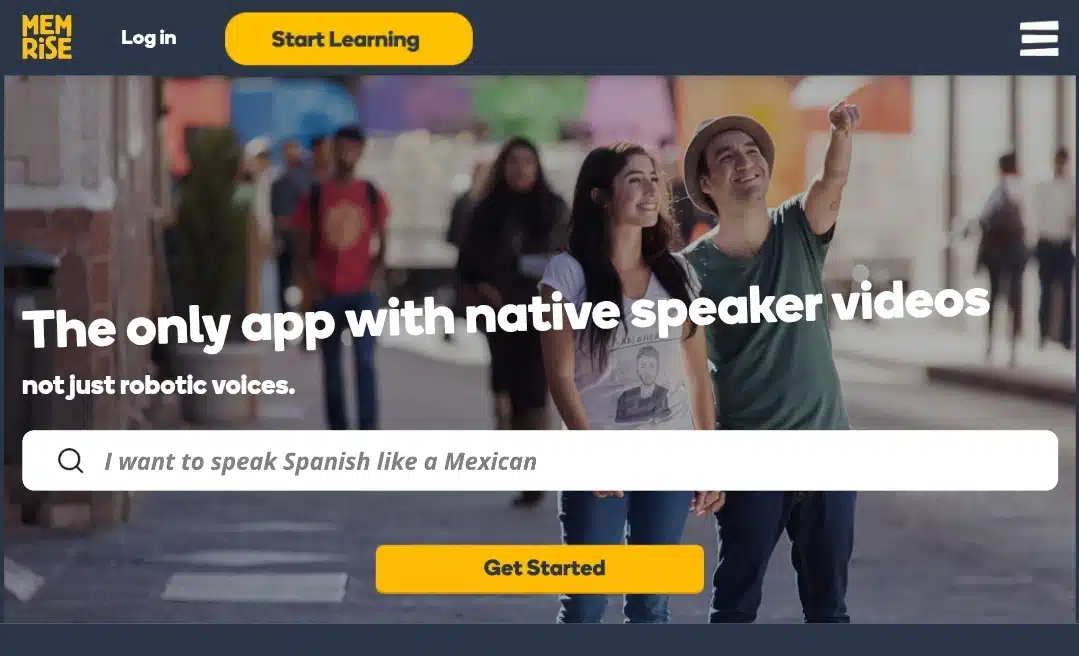
Memrise blends memory science with real-world content to make learning both effective and fun. It started with a huge collection of user-made “mems” (mnemonics), but now focuses on curated lessons, still peppered with community contributions. You’ll find short vocab drills, native-speaker videos, and even chat with an AI bot. These are great tools to build confidence in comprehension and speaking.
Key Features
- Mnemonic-based learning: Clever memory triggers tie new words to familiar English phrases (e.g., aburrido = “it’s aburrido to eat a burrito”).
- Spaced repetition system: Words are reviewed at just the right time to help cement memory.
- Real-world video clips: Short native-speaker videos (interviews, ads, music) show real pronunciation and usage.
- AI chatbot: Practice simple conversations with MemBot, great for learners who are shy about speaking.
- Points, leaderboards & groups: Gamification keeps motivation high and connects you with others.
- Offline learning: Download lessons to study anywhere (Pro-only).
Pricing
- Free plan: Unlimited vocab lessons, limited videos, AI chat, spaced repetition; no offline access.
- Memrise Pro: Unlocks all videos, offline mode, advanced review tools, full content
- Monthly: ~$22.99
- Yearly: $89.99 ($7.50/mo)
- Lifetime: ~$249.98 (often discounted)
While Memrise does push its Pro plan, the free version still gives you a solid learning experience especially if you’re just getting started or want to dip your toes into a new language. The short, casual video clips with native speakers are a big win, and the built-in review system actually helps you remember what you’ve learned.
4. Mango Languages
Mango Languages takes a practical, audio-based approach to language learning. It was launched in 2007 and now offers 70+ languages, focusing on real-world short conversations, vocabulary explanations, and cultural insights. While it’s not as flashy as some apps, its strength lies in clean structure, authentic dialogue recordings, and native-speaker audio, without relying heavily on gamification
Features
- Lesson-based conversation learning: Each ice-breaker lesson covers word-by-word breakdowns of useful dialogues.
- Spaced-repetition review: Reinforces vocabulary based on how well you remember it.
- Phonetics + waveform comparison: Record yourself speaking and visually compare to native pronunciation.
- Cultural & grammar notes: Helpful commentary—formal vs. informal usage, cultural context, pronunciation tips.
- Interactive features: Includes listen-and-respond drills, reading passages, and even “Mango Movies” in some languages.
- Offline mode: Apps sync progress across devices and let you download lessons for offline use.
Pricing
- Free version: Offers the first 3 lessons in every course, plus unlimited access via public libraries, schools, or organizations.
- Individual Subscription:
- $11.99/month for a single language
- $19.99/month for all 70+ languages
- Annual deals around $79.99–179.99/year ($6.67–$14.99/month)
- Free trial: 14 days of full access to all features
- Institutional access: Often free via libraries or schools, ask your local library!
AI-powered Duolingo alternative
You’ve seen structured, paid options and solid, free choices, but there’s a whole new corner of the language-learning world that’s all about AI-powered conversation. These apps feel more like talking to a tutor than tapping flashcards. Let’s jump into our top pick for an AI-first language tool.
- LanguaTalk (aka Langua)

LanguaTalk launched in 2023 and has quickly carved out a reputation as one of the most advanced AI conversation apps available. It offers near-human voice interaction, letting you chat through realistic scenarios like ordering food or discussing current events with AI that feels natural and responsive. This makes it ideal for learners who want speaking practice without the awkwardness or schedule constraints of live tutors.
Key Features
- AI Conversations with Native Accents: Voices in advanced target-language accent models make the dialogue feel genuine.
- Instant Feedback & Translations: Miss a word? The app corrects you on the spot and explains the meaning clearly.
- Fallback to Native Language: Struggling mid-conversation? Switch to your native language anytime and pick up where you left off.
- Vocabulary Reinforcement: New words from conversations are saved automatically to flashcards for spaced review.
- AI‑Generated Stories: Practice comprehension and reading with short stories crafted around your saved vocabulary
Pricing
LanguaTalk offers a basic free tier, enough for casual users or those testing the waters. For full interactive features, Roleplay, and lesson packs, they offer these subscription options (based on sources):
- Unlimited plan: ~ $14.99–19.99/month
- Communicate plan: may be slightly cheaper, with limited monthly minutes
Note that pricing varies by region and may require contacting support for exact tiers.
Duolingo alternatives at a glance
| App | Type | Key Strengths | AI Features | Pricing ($) |
| Babbel | Paid | Structured lessons, grammar focus, live classes | AI conversation bot | $14.95/mo, $83.40/year, Lifetime ~$129 |
| Rosetta Stone | Paid | Full immersion, strong pronunciation tools | TruAccent speech feedback | $15.99/mo, $179 lifetime |
| Memrise | Freemium | Real-world videos, memory aids, and fun quizzes | AI chatbot (MemBot) | Free, Pro from $7.50/mo or $89.99/year |
| Mango Languages | Freemium | Audio-based lessons, grammar & culture notes | Speech waveform comparison | Free via libraries, $11.99–19.99/mo |
| LanguaTalk | AI apl | Realistic AI conversation, auto flashcard creation | Full AI-powered tutor | Free tier, ~$14.99–19.99/mo for full |
Final Thoughts
Duolingo is a great place to begin, but it doesn’t have to be where you stop. If you’re looking for more structure and depth, Babbel and Rosetta Stone are solid upgrades. Want to keep things free? Memrise and Mango Languages offer smart features without the price tag. And if you’re curious about what AI can do, LanguaTalk brings conversation practice to a whole new level.
So go ahead, try a few of these out and see which one feels right for you. Everyone learns differently, and the best app is the one that keeps you coming back.
Have you used any of these apps already? Or is there another one you swear by? Drop a comment, we’d love to hear what’s working for you (or what isn’t)!
You may also like:
| Talkpal Review | Best AI app for learning English language |

